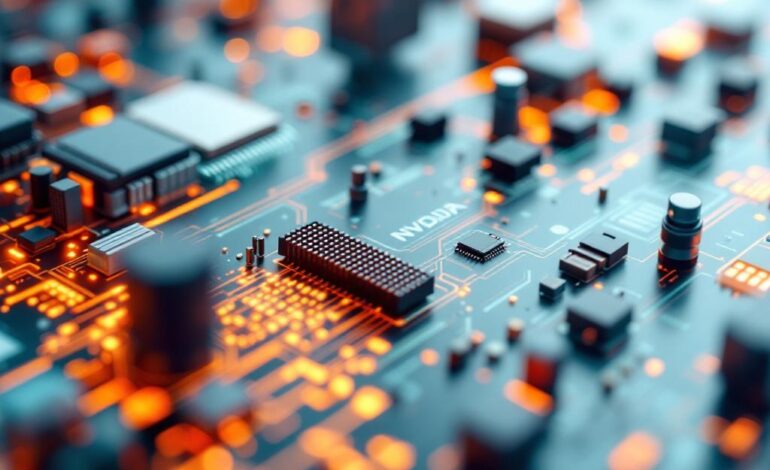Nvidia Declares “Generation Ahead” Over Google’s AI Chips in Major Showdown

UPDATE: In a dramatic escalation of the AI arms race, Nvidia Corp. has boldly declared that its latest graphics processing units (GPUs) are a full “generation ahead” of Google’s custom silicon efforts. This announcement, reported by CNBC, signals a fracture in the long-standing relationship between the tech giants as they vie for dominance in the rapidly evolving AI landscape.
This assertion comes at a critical time when Big Tech companies are investing billions to reduce dependency on Nvidia’s hardware. Historically, firms like Google, Microsoft, and Amazon have purchased billions worth of Nvidia’s H100 and Blackwell GPUs while simultaneously developing their own proprietary chips. However, Nvidia’s latest statement indicates a shift from coexistence to competition, marking a significant turning point in the market.
According to industry insiders, Nvidia’s confidence is rooted not only in superior raw performance but also in a competitive edge in memory bandwidth and networking that Google’s Tensor Processing Unit (TPU) struggles to match. Nvidia’s Blackwell architecture is positioned against Google’s latest Trillium TPU, which Google claims is over four times more efficient than its predecessor. Yet, Nvidia argues that these comparisons overlook essential aspects of performance necessary for training advanced AI models.
The stakes are high as Nvidia transitions from chip sales to offering entire supercomputing solutions, leveraging their NVLink technology that allows thousands of GPUs to operate cohesively. This advances the critical capability of moving data swiftly between chips, an increasingly vital factor as AI models grow ever more complex.
In a recently published analysis, Bloomberg highlighted the economic implications of this rivalry. Google’s investments in TPUs are motivated by a desire to control total cost of ownership (TCO). Yet, Nvidia warns that the “time-to-intelligence” advantage they offer can outweigh the savings from internal silicon development. If Nvidia hardware can train models three months faster than Google’s TPUs, the cost of delay could be unacceptable in the fast-paced AI environment.
Meanwhile, supply chain dynamics add another layer of complexity. Both Nvidia and Google rely on manufacturing capabilities from TSMC, suggesting that despite Google’s efforts to create custom chips, they face similar production bottlenecks. Nvidia’s claim of being “a generation ahead” implies that they are innovating faster than Google can catch up.
The battle doesn’t stop at hardware; software compatibility plays a critical role as well. Nvidia’s CUDA platform remains the industry standard, making it challenging for Google to sway developers to their alternative solutions. As startups and enterprises prefer Nvidia for its robust software ecosystem, moving code to run on TPUs demands significant engineering resources, a barrier many companies are reluctant to overcome.
As this unfolding rivalry attracts attention from financial markets, analysts are watching Nvidia’s strategic positioning closely. With gross margins near historic highs, Nvidia aims to maintain its pricing power against potential competition from Google’s TPUs. The consensus suggests that while Google may secure its internal needs, the broader market for AI training remains solidly in Nvidia’s hands.
The implications extend into the cloud computing realm, where third-party providers struggle to procure adequate Nvidia compute resources. Google’s TPU offerings thus become an appealing alternative, but Nvidia’s public critiques of rival chip capabilities may steer enterprise customers towards their solutions, essentially funding their competitor’s growth.
Looking ahead, the industry is likely to embrace a heterogeneous computing landscape. Experts predict that Nvidia’s top-tier GPUs will excel in demanding tasks while Google’s efficient TPUs will handle routine processing. Nvidia’s proclamation of a generational lead highlights the ongoing evolution of the AI sector, where innovation and competitiveness are rapidly reshaping the data center landscape.
As the AI industry matures, Nvidia’s declaration serves as a critical reminder: incumbency is no shield against competition, particularly when a powerful contender like Google is relentlessly pursuing innovation. For now, Nvidia’s dominance in the AI hardware market remains intact, but the battle for the future of AI is just beginning.






